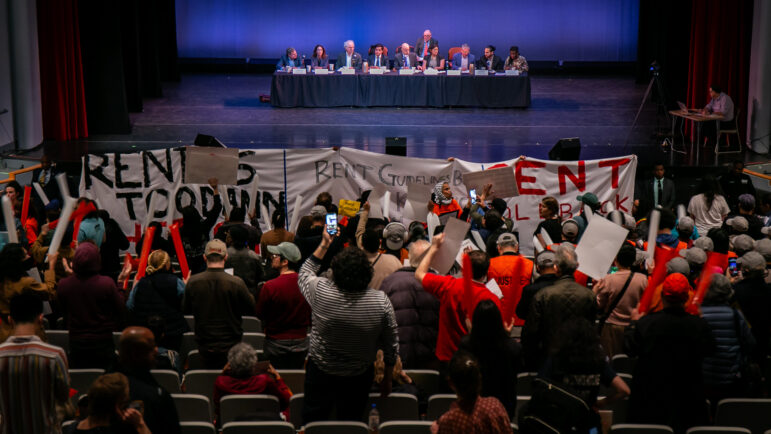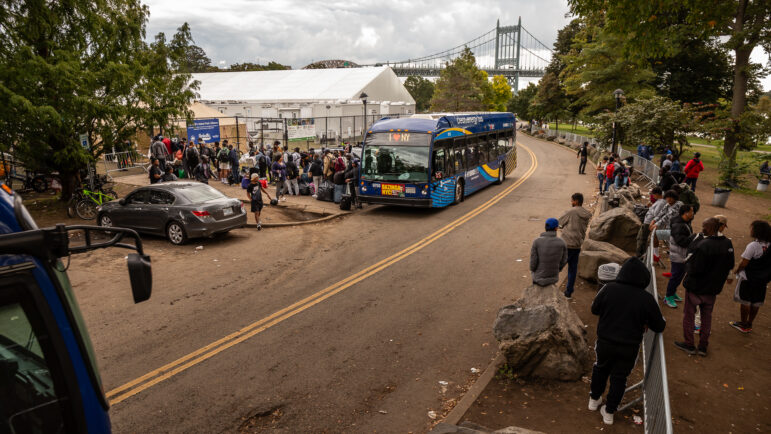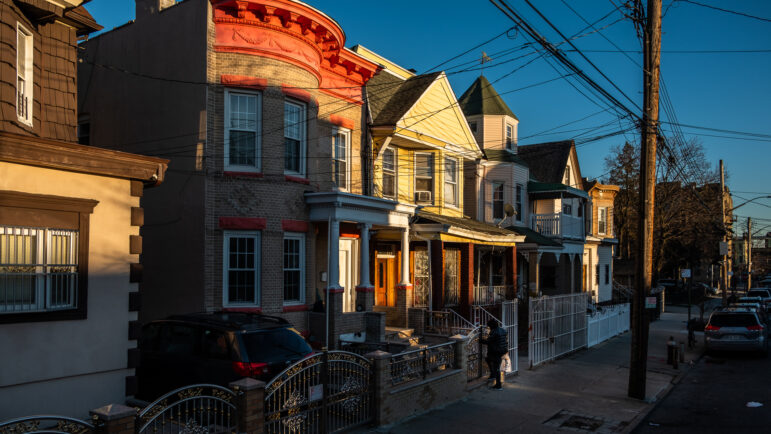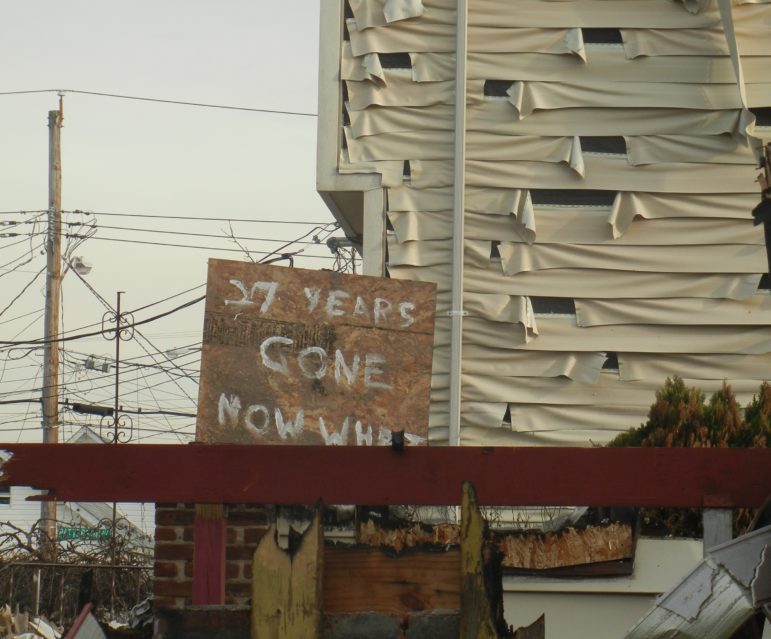
Jarrett Murphy
A question amid Sandy’s ruins in Staten Island. November, 2012.
Extreme weather events are no longer a distant threat for cities big and small across the country. Millions of people are picking up the pieces from wildfires in Northern California and hurricanes in Texas, Florida, Puerto Rico, the Virgin Islands and more. In addition to the destruction these disasters have left in their wake—most of Puerto Rico remains without power and potable water, significant portions of Houston’s housing stock are severely damaged, and more than 8,000 structures in California were reduced to ashes—they have sent shockwaves across the nation. Thousands of people are without permanent homes and vital services, children are missing critical days of school, damage to farming economies will lead to reduced food supplies and increased food prices, and municipalities are already struggling to secure the necessary funding to rebuild.
That just covers 2017. Other people and other cities are still recovering from earlier disasters they simply weren’t prepared to handle, and we all continue to pay the price. As with any climate event or natural disaster, low-income communities are facing the brunt of this assault because disinvestment made them more vulnerable to damage in the first place. And as with any climate event or natural disaster, without dedicated resources and targeted relief efforts, they will take the longest to recover.
This hits particularly close to home in New York as we mark five years since Superstorm Sandy landed on our shores. The region may not have been prepared in 2012, but in the last five years housing and municipal agencies, along with communities that were directly affected by the storm, have worked with the Department of Housing and Urban Development and other national organizations to both rebuild communities and rethink the way they are designed to make resiliency a top priority.
Thanks to this effort, the New York region can be a model for how other cities can use resiliency to respond to and prepare for disasters. Programs like Rebuild by Design, the NY Rising Community Reconstruction (NYRCR) program, and new departments and agencies focused on disaster recovery like the Mayor’s Office of Resilience and Recovery, NYC Housing Preservation and Development’s Resiliency resources, and the Governor’s Office of Storm Recovery can be exported or adapted for other regions across the country.
Five years in, New York still has work to do before the region can claim to be truly resilient or able to withstand a major hurricane or weather event. But we have learned so much about resilient design, and other cities can in turn learn from us. Whether affected by extreme weather in 2017 or not, here are a few things urban leaders across the country should keep in mind:
·Don’t wait until a disaster to invest in resilience. Start planning before the event, particularly if you can determine what the hazards and weak points are. Enterprise created a Ready to Respond guide using best practices and advice from experts around the country that multifamily building owners can use as a starting point. Enterprise also launched its Design for Resilience program in 2017 and awarded grants to five affordable housing organizations from around the country to help incorporate climate considerations into their predevelopment design plans. Programs like this incentivize communities to take the time to build in resiliency from the start, saving money (and potentially lives) in the long term.
·Set realistic expectations. Rebuilding takes a long time, and many variables inform how rebuilding moves forward, such as: how much funding is allocated, the source of the funding and what the compliance requirements are; the severity of the disaster and how many structures and communal infrastructure essentials like power and roads are impacted; how much community engagement is incorporated in the programming; and how much training agencies have had on disaster recovery. Taking stock of what resources are available and what responses are possible—and communicating that information to everyone with a stake in the recovery process—may be tedious, but it allows for realistic goal-setting and protects against criticism and broken promises down the line.
·Make sure rebuilding accomplishes more than one goal. How can rebuilding offer a municipality the opportunity to increase affordable housing stock, sustainability, and economic, physical, and social resilience? How can the community be made better than it was before?
·Incorporate community feedback. Within a city, neighborhoods and communities vary widely. Queens’ Far Rockaway is vastly different than the East Village. Accordingly, a single program might not work effectively across all neighborhoods. For this reason, community input is essential in order to ensure that investments are meeting the specific needs of individual neighborhoods.
The biggest challenge with extreme weather events is their unpredictability. It’s time for cities across the country to take that out of the equation and assume that sooner or later, disaster will strike—and it’s essential to be prepared. Five years later, we no longer think of storms like Sandy as “once in a generation.” With the right preparation, no region will be caught off guard again.
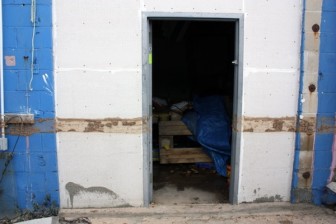
A sandy line marked Sandy's reach in Coney Island a few days after the storm.
Read City Limits’ Coverage



